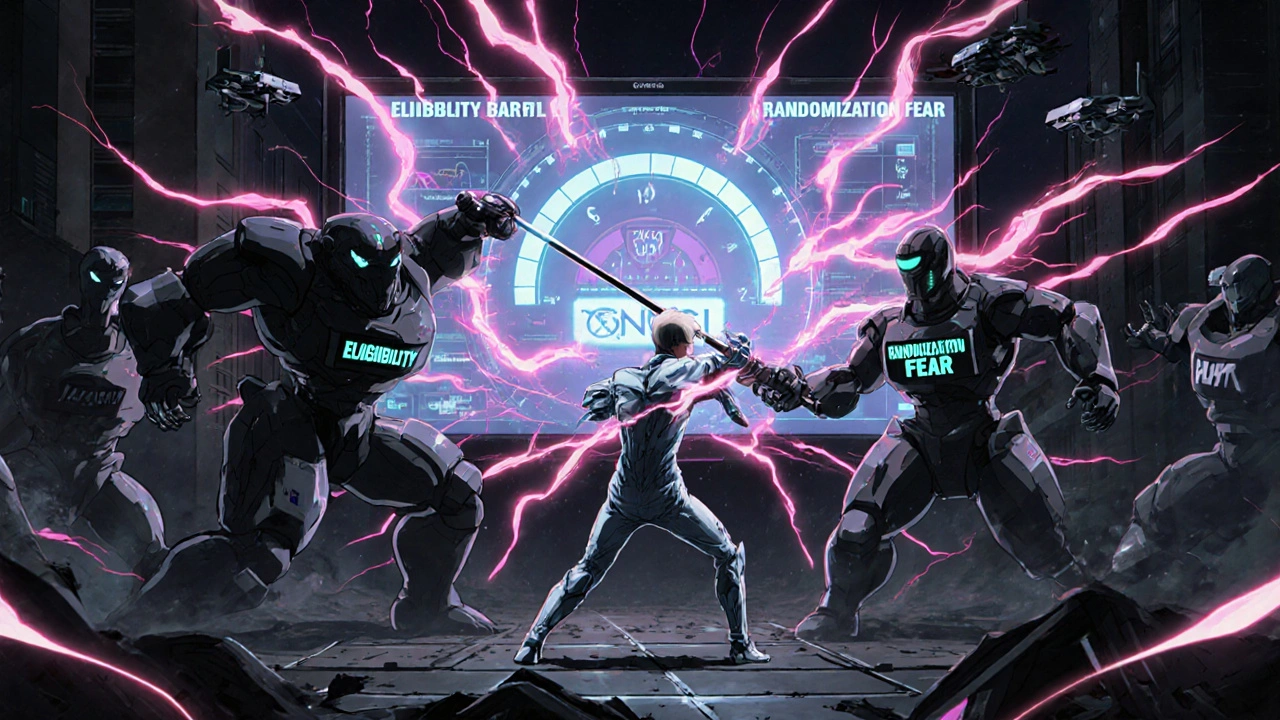When you’re facing a cancer diagnosis, every decision feels heavy. One option that often comes up-but isn’t always well understood-is joining a cancer clinical trial. It’s not just about trying something new. It’s about being part of a carefully planned, step-by-step process that could lead to better treatments for you and others. Many people think clinical trials are a last resort, or that they’re risky experiments. But the truth is, they’re one of the most regulated and structured ways new cancer treatments are tested-and they’ve helped save countless lives.
How Cancer Clinical Trials Work: The Four Main Phases
Cancer clinical trials don’t jump straight to giving new drugs to hundreds of people. They follow a strict, five-step system designed to protect patients while finding out what works. This system wasn’t created overnight. It evolved after tragedies like thalidomide in the 1960s, when drugs were released without proper testing. Today, every new cancer treatment must pass through these phases before it’s approved for everyone.Phase 0 is the smallest and fastest. It involves just 10 to 15 people and uses tiny, non-therapeutic doses. The goal isn’t to treat cancer but to see if the drug even reaches the tumor and how the body breaks it down. Think of it as a test drive before the full race. This phase helps researchers decide whether a drug is worth studying further.
Phase I is where safety is the only focus. Around 20 to 80 people take part, usually those who’ve run out of standard options. Researchers start with very low doses and slowly increase them, watching closely for side effects. The goal? Find the highest dose you can safely take. This phase doesn’t measure if the drug shrinks tumors-it’s all about figuring out what’s safe. It’s risky because it’s often the first time the drug is used in humans. But strict rules keep participants protected.
Phase II shifts to effectiveness. Now, 25 to 100 people with a specific type of cancer get the treatment. Researchers watch to see if it shrinks tumors, slows growth, or improves survival. This is where you start to see real signals of whether a drug might work. About half of drugs that enter Phase II fail to move forward because they don’t show enough benefit or cause too many side effects. But for those who respond, it can be life-changing.
Phase III is the big test. Thousands of people across multiple hospitals-and sometimes countries-are involved. Half get the new treatment; half get the current standard care. It’s randomized, so neither you nor your doctor chooses which one you get. This phase answers the most important question: Is this new treatment better than what’s already available? These trials take 1 to 4 years. If the results are strong, the drug can be submitted for FDA approval.
Phase IV happens after the drug is on the market. Thousands more patients take it over many years. The goal? Catch rare side effects that only show up over time or in specific groups. It also helps doctors understand the best way to use the drug in real life-not just in controlled trials.
Why Participate? Real Benefits Beyond Hope
People join clinical trials for different reasons. Some have run out of options. Others want to help future patients. But the benefits go deeper than just hope.Participants often get more attention than in standard care. A 2022 survey of 1,200 trial participants found that 78% said their care team monitored them more closely. That means more blood tests, more scans, more check-ins. You’re not just a patient-you’re a key part of a research team.
Access to cutting-edge treatments is another major draw. Take Sarah, a 52-year-old from Melbourne with stage 4 melanoma. After two rounds of chemotherapy failed, she joined a Phase II immunotherapy trial. Within six months, her tumors shrank by 70%. She’s been cancer-free for three years. Her story isn’t rare. In fact, many of today’s most effective cancer drugs-like pembrolizumab and nivolumab-were first tested in trials like hers.
There’s also a powerful emotional benefit. Eighty-five percent of participants in a National Comprehensive Cancer Network study said knowing they were helping others gave them purpose. One participant put it simply: “When I felt like giving up, I remembered I wasn’t just doing this for me.”
The Challenges: What You Might Face
It’s not all easy. Clinical trials come with real hurdles.Logistics can be overwhelming. Travel is the biggest issue. One participant on Reddit said she drove three hours each way for every appointment while recovering from chemo. Forty-two percent of trial participants report similar problems. Transportation, time off work, and childcare add up fast.
Eligibility is strict. The average trial has 28 inclusion and exclusion criteria. Things like recent surgery, other health conditions, or even past treatments can disqualify you. That’s why only 3 to 5% of adult cancer patients in the U.S. join trials-even though experts say up to 20% could qualify.
Then there’s randomization anxiety. Sixty-three percent of potential participants worry they’ll get the standard treatment instead of the new one. But here’s the truth: standard care is what’s already proven to work. Getting it in a trial means you’re still getting the best-known option, while helping researchers compare it to something better.

What You Need to Know Before You Join
If you’re considering a trial, start with these basics:- Understand the terminology: Know what “randomized,” “placebo,” and “double-blind” mean. Most cancer centers now offer free educational materials from the National Cancer Institute to help you.
- Ask about support: NCI-designated cancer centers have patient navigators-specialists who help with insurance, travel, and understanding your options. These services are available at 78% of these centers, but only 31% of community hospitals.
- Know your rights: You can leave a trial at any time, for any reason. No one can force you to stay.
- Ask about costs: In most cases, the trial sponsor pays for the new treatment and extra tests. Your insurance still covers routine care like blood work or scans, but always confirm this in writing.
The screening process takes about 14 days on average. You’ll go through blood tests, scans, and detailed interviews. Don’t rush. Take notes. Bring someone with you. It’s okay to say no-or to say, “I need more time.”
What’s Changing in Cancer Trials Today
The system isn’t stuck in the past. It’s evolving.Master protocols like MATCH are changing how trials are designed. Instead of grouping patients by where the cancer started (lung, breast, colon), they group them by genetic mutations. So if you have a rare BRAF mutation, you might join a trial for any cancer type that carries it-whether it’s melanoma, colorectal, or lung. This precision approach is making trials smarter and faster.
Remote monitoring is growing too. In 68% of Phase III trials now, patients wear devices that track heart rate, activity, or even symptoms in real time. This reduces the need for frequent hospital visits.
And diversity is finally being addressed. Black patients make up 13% of cancer cases in the U.S. but only 8% of trial participants. New initiatives are partnering with community clinics and offering transportation help to fix that gap.
Hybrid trials-mixing in-person visits with virtual check-ins-are becoming common. By 2025, 45% of cancer centers plan to offer them. That means fewer long drives, less time off work, and more people able to join.

Is It Right for You?
There’s no single answer. But if you’re looking for more options, better monitoring, or a chance to help others, clinical trials deserve a serious look.They’re not magic. They’re science-carefully designed, heavily regulated, and constantly improving. The system isn’t perfect. It’s slow. It’s complex. But it’s saved more lives than any other approach in modern oncology.
If you’re considering a trial, talk to your oncologist. Ask: “Are there any trials open for my type of cancer?” Don’t assume you’re not eligible. Ask again. And again. You might be surprised what’s out there.
Are cancer clinical trials safe?
Yes, but with important context. Every trial follows strict safety rules set by the FDA and international guidelines. Phase I trials start with tiny doses and increase slowly only if no serious side effects occur. All participants are closely monitored, and trials can be stopped immediately if safety risks arise. While there’s always some risk with experimental treatments, the phased system is designed to protect you better than ever before.
Will I get a placebo in a cancer trial?
Rarely-and only when it’s ethical. In cancer trials, you’ll almost always receive either the new treatment or the current standard of care. Placebos are only used if there’s no proven treatment available, or if they’re added on top of standard therapy (like a placebo pill alongside chemo). No one is left without treatment in a cancer trial.
Do I have to pay to join a clinical trial?
Usually not. The trial sponsor pays for the new drug, extra tests, and research-related costs. Your regular medical care-like blood work, imaging, or doctor visits-is typically covered by your insurance. Always ask for a written cost breakdown before joining. Some trials even cover travel or lodging.
Can I leave a clinical trial once I join?
Absolutely. You can withdraw at any time, for any reason-no questions asked. Your decision won’t affect your future care. Your medical team will help you transition back to standard treatment if needed.
How do I find a cancer clinical trial?
Start with your oncologist. They often know what’s available locally. You can also search the U.S. National Library of Medicine’s clinicaltrials.gov website or contact an NCI-designated cancer center. In Australia, the Australian New Zealand Clinical Trials Registry (ANZCTR) is a good resource. Patient advocacy groups like Cancer Council Australia also offer free trial-matching services.
What if I don’t qualify for a trial?
Many patients don’t qualify due to strict criteria-but that doesn’t mean you’re out of options. Ask your doctor about expanded access programs, also called compassionate use. These let patients with no other options get experimental drugs outside of trials. The FDA’s Project Facilitate has helped over 1,200 patients this way since 2019. Also, new trials open every week. Keep asking. Your eligibility may change as your condition evolves.
What Comes Next?
If you’re thinking about a trial, start with one conversation. Write down your questions. Bring a friend. Don’t be afraid to ask, “What’s the worst that could happen?” and “What’s the best?”Clinical trials aren’t a gamble. They’re a ladder-each step built on the last, each participant helping the next. The treatments we use today were once experimental. The breakthroughs of tomorrow are being tested right now. And you could be part of that story.
